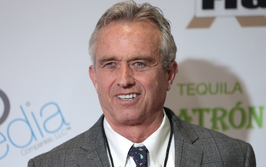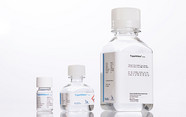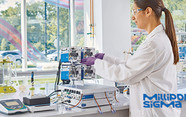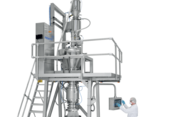Breaking a Therapeutic Curse
A series of setbacks in the development of an effective treatment for nonalcoholic steatohepatitis has earned the field a reputation for being “plagued” but new approaches are underway
Grit Zahn | | Opinion

In June, a surprising decision from the FDA dealt the fatty liver disease research community its toughest blow yet. The agency refused to approve Intercept’s Ocaliva, a treatment for nonalcoholic steatohepatitis (NASH) – a condition characterized by liver inflammation and damage. The widely anticipated therapy would have been the first approved to treat the disease, but was rejected due to an uncertain risk-benefit profile. The news came on the heels of disappointing phase III results in May from French biotech Genfit, whose drug, elafibranor, failed to distinguish itself from placebo. NASH is a growing health concern – and these recent failures have sucker-punched the industry. The number of people living with NASH in the US, for example, is predicted to grow from 16.5 million to 27 million over the next 10 years (1) – contributing to a worsening healthcare bill whose direct costs are estimated at US$600 million to $1 billion per year (2). Predictions suggest that NASH will soon replace hepatitis C as the main cause of liver transplants in the US (3). Thus, there is a growing sense of urgency about the disease and its comorbidities.
Despite the setbacks, this is a young, rapidly evolving field and research on additional therapeutic approaches for NASH will continue. Today, there is a trend toward connecting specialists from fields as divergent as gastroenterology and endocrinology to better understand NASH as part of a larger metabolic syndrome. A metabolic syndrome can be defined as a cluster of conditions that occur together, such as insulin resistance, hypertension, fatty liver, visceral obesity, and dyslipidemia. The broader categorization of the disease will help improve awareness and understanding of NASH pathogenesis and, ultimately, optimize future treatment options.
A recent paper in The Journal of Hepatology (4) proposes a new categorization of nonalcoholic fatty liver disease: metabolic-associated fatty liver disease (MAFLD). According to the paper, “reaching consensus on the criteria for MAFLD will help unify the terminology, enhance the legitimacy of clinical practice and clinical trials, improve clinical care and move the clinical and scientific field of liver research forward.” This reflects our current understanding of how the liver affects other organs as part of a larger disease complex. As soon as there is inflammation in the liver, there will be an increase in inflammatory factors affecting the heart, brain, colon, adipose tissue, and skeletal muscle, as well as immune function, coagulation, and hematopoiesis. The inflammatory factors derived from the fatty liver trigger diabetes progression by inducing insulin resistance and inhibiting beta cell function, cardiovascular disease, and neurocognitive decline. This systematic biological response is catalyzed by the continuous secretion of insulin, glucose, lipids, hepatokines, cytokines, and chemokines, as well as metabolites, miRNAs, and others from the liver (5).
Researchers are aware of these connections, but most drug discovery programs pick a single aspect of the disease to target, using the rationale that inhibiting one pathway may hinder overall disease progression. However, other avenues with broader approaches targeting multiple disease related pathways by addressing a single protein or a combination of different proteins involved in liver metabolism are needed. With this strategy, not only liver damage (including hepatic steatosis and hepatic insulin resistance) can be addressed, but it may also have beneficial effects against cardiovascular risk factors. This is significant because most NASH patients don’t die from liver failure, but from cardiovascular problems.
The industry has not been deterred by recent failures; there are still several candidates advancing through the drug pipeline. For example, French biotech Inventiva has attempted to bolster Genfit’s approach by using a similar one (Genfit targets PPARalpha and delta, but Inventiv targets PPAR alpha, gamma and delta), and successfully hit multiple endpoints in a phase IIb study of lanifibranor. Lanifibranor, a pan-PPAR agonist, met its primary endpoint of reducing the steatosis activity fibrosis score (a system for categorizing liver histologic findings) from baseline at six months compared to placebo in top-line data reported on 15 June (Inventiva press release). Inventiva also said its drug met key secondary endpoints of NASH resolution without worsening of liver fibrosis and with improvement of fibrosis, the two surrogate endpoints identified by the FDA and the European Medicines Agency for approval of a NASH therapy. On 12 October FDA has granted Breakthrough Therapy designation to Lanifibranor (Inventiva press release).
Other innovative candidates currently progressing in the clinic include Madrigal’s compound targeting thyroid hormone receptor ß in phase III and Novo Nordisk’s GPL-1 agonist, semaglutide, in phase II. There are also many initiatives at the preclinical level, including our own research into the inhibition of sodium-coupled citrate transporter INDY (I’m Not Dead Yet/NaCT/SLC13A5), a target involved in cardiovascular regulations such as blood pressure as well (6). These data have revived hope that one or more effective treatments may come to market in the near future. Also clear is that the field is far from finished with the process of trial and error necessary for significant progress. As we continue down this road, the benefits of expanding the treatment approach to NASH with a broader mode of action will become more evident. A broad, safe-acting potentially combination therapy is likely the answer to successfully addressing the metabolic dysregulation, inflammation, fibrosis, and cardiovascular risk factors associated with NASH.
- C Estes et al., “Modeling the Epidemic of Nonalcoholic Fatty Liver Disease Demonstrates an Exponential Increase in Burden of Disease,” Hepatology, 67 (2018).
- P Newsome et al., “The economic costs and health burden of Nonalcoholic Steatohepatitis in the EU5 countries,” Digestive and Liver Disease, 52 (2020).
- RJ Wong et al., “Nonalcoholic Steatohepatitis Is the Second Leading Etiology of Liver Disease Among Adults Awaiting Liver Transplantation in the United States,” Gastroenterology, 148 (2015).
- M Eslam et al., “ A new definition for metabolic associated fatty liver disease: an international expert consensus statement,” Journal of Hepatology, 73 (2020).
- N Gehrke, JM Schattenberg, “Metabolic Inflammation—A Role for Hepatic Inflammatory Pathways as Drivers of Comorbidities in Nonalcoholic Fatty Liver Disease?” Gastroenterology, 158 (2020).
- DM Willmes et al., “The longevity gene mIndy (I’m Not Dead, Yet) affects blood pressure through sympathoadrenal mechanisms,” JCI Insight (2021).



















